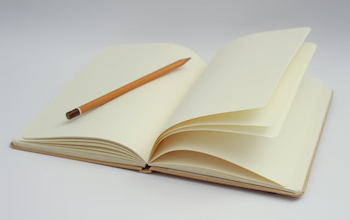Journaling Styles: Finding the Approach That Fits Your Gratitude Practice

Journaling has long been recognized as a powerful tool for self-reflection, personal growth, and mental well-being. Many individuals turn to journaling as a way to express their thoughts, emotions, and experiences, allowing them to gain clarity and insight into their lives. Among the various types of journaling practices, one that has received significant attention is gratitude journaling. This particular style focuses on cultivating gratitude and appreciation for the positive aspects of life. However, not all gratitude practices are created equal, and different approaches resonate differently with individuals. In this article, we will explore different journaling styles that can enhance your gratitude practice, helping you find the approach that best aligns with your needs and preferences. Whether you're new to gratitude journaling or a seasoned practitioner, understanding the various journaling styles and their benefits will allow you to embark on a more fulfilling and personalized journey of gratitude.
1. Traditional Gratitude Journaling:
This is the most common and straightforward style of gratitude journaling. In this approach, you simply write down a list of things you are grateful for each day. It can range from big things like achievements and relationships to small things like a beautiful sunset or a kind gesture from a stranger. By consciously acknowledging and appreciating the positives in your life, you train your mind to focus on gratitude and develop a more optimistic outlook.
2. Visual Gratitude Journaling:
If you are a visual person and find joy in creative expression, visual gratitude journaling may be the perfect style for you. Instead of writing a list, you can create a visual representation of your gratitude. This can be in the form of drawings, collages, or even photographs. The act of visually capturing your gratitude adds an extra layer of mindfulness and creativity to your practice, making it more engaging and enjoyable.
3. Gratitude Letter Writing:
In this journaling style, you write letters expressing gratitude to the people who have positively impacted your life. It can be someone from your past, a current friend or family member, or even a mentor. The act of writing a heartfelt letter not only allows you to express your gratitude but also strengthens relationships and fosters a sense of connection. You can choose to send these letters or keep them as a personal reminder of the impact others have had on your life.
4. Reflection and Analysis:
If you prefer a more introspective approach, reflection and analysis journaling can deepen your gratitude practice. In this style, you reflect on a specific event, experience, or person that you are grateful for and explore why it holds significance for you. By delving deeper into the underlying emotions and reasons behind your gratitude, you gain a deeper understanding of yourself and the impact certain aspects of your life have on your well-being.
5. Gratitude Journal Prompts:
Sometimes, we may find it challenging to come up with things to be grateful for, especially during difficult times. Gratitude journal prompts can provide a helpful starting point and guide your journaling practice. These prompts can be specific questions or statements that trigger reflection and gratitude. For example, "What is something that made you smile today?" or "Write about a person who has shown you kindness recently." Using prompts can help you explore different aspects of your life and uncover gratitude in unexpected places.
Finding Your Ideal Approach
Experimenting with these different journaling styles can help you find the approach that resonates most with you. You may even find that a combination of styles works best for your gratitude practice. Remember, the key is to choose a style that feels natural and enjoyable to you. By incorporating gratitude journaling into your daily routine, you will cultivate a more positive mindset, increase self-awareness, and experience greater overall well-being.
In conclusion, gratitude journaling offers a multitude of different styles to suit individual preferences and needs. Traditional gratitude journaling allows for a simple and straightforward approach, while visual gratitude journaling adds creativity and mindfulness to the practice. Gratitude letter writing fosters deeper connections and strengthens relationships, while reflection and analysis journaling offers a more introspective approach, allowing for a deeper understanding of oneself. Gratitude journal prompts provide guidance and inspiration, especially during challenging times.
It is important to remember that there is no right or wrong way to practice gratitude journaling – the key is to find an approach that feels natural and enjoyable. By incorporating gratitude journaling into one's daily routine, a more positive mindset is cultivated, self-awareness is increased, and overall well-being is enhanced. Experimenting with different styles can help individuals discover their ideal approach or even a combination of styles that works best for their gratitude practice. Embracing gratitude journaling as a regular habit has the potential to transform one's outlook on life and bring about lasting positive change.
Sign up now and try Daily Gratitude for free.
Sign up takes 1 minute. 7-day free trial. Instant activation.
 November 19, 2025
November 19, 2025
Recent Blogs
-
Mindful Moments: Integrating Gratitude into Your Daily Journaling Routine
-
Beyond Thankfulness: Advanced Techniques for Elevating Your Journaling
-
Journaling Styles: Finding the Approach That Fits Your Gratitude Practice
-
Creative Journaling: Expressing Gratitude Through Art and Words
-
Crafting Your Daily Gratitude Ritual: Techniques for Lasting Habits
More Blogs by Hamza

Family Journaling: Fostering Gratitude Together with Loved Ones
Gratitude is a powerful emotion that has the ability to transform our lives and relationships in pro...

Gratitude Journaling Apps: Navigating the World of Digital Journaling
Gratitude journaling, a practice of expressing gratitude for the positive aspects of life, has long ...

Seasonal Journaling: Adapting Your Practice to the Changing Year
As each season comes and goes, the world around us transforms, revealing new colors, scents, and sen...



